On View
Berlin Gallery Weekend Is More Macho Than Usual This Year, So Here Are 5 Solo Shows by Women Artists to Watch
The much-emulated and wildly successful event in the German capital is not without its controversies.
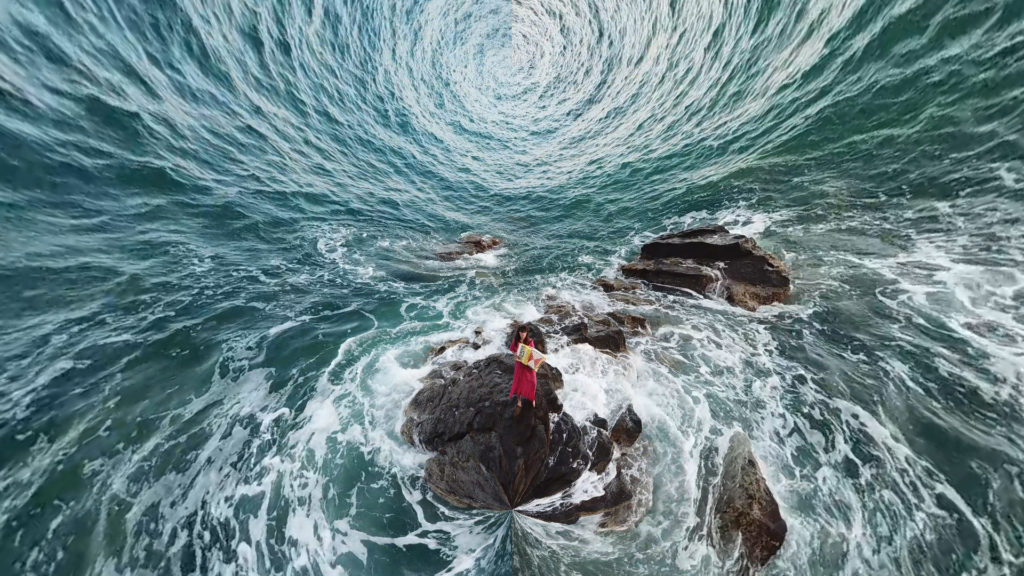
The much-emulated and wildly successful event in the German capital is not without its controversies.

Hili Perlson

It seems as if Berlin Gallery Weekend, which opens its 15th edition on Friday, hasn’t had a year without a bit of pushback recently.
Last year, a dealer not included in the list of participants, Christian Siekmeier of Exile Gallery, complained about the opaque selection process and took issue with the way funds are being spent on a lavish dinner for hundreds of invitees. (Galleries can only join upon invitation by the event’s organizing core dealers; some invitees decline).
Perhaps the most famous example of infighting around Gallery Weekend happened between 2010 to 2012 when the well-respected dealer Giti Nourbakhsh, who was also one of the founding members of BGW, didn’t get into Art Basel for two consecutive years after she decided to leave BGW’s committee. At the time, the majority of the Art Basel selection committee were her colleagues on the BGW committee, so Nourbakhsh alleged that she was bullied out of Art Basel by competitors, and closed her gallery. Whispers of a Berlin gallery mafia lingered for years after that.
This year, the highly successful and much-emulated weekend of synchronized gallery openings, which is organized and funded by the participating dealers to lure collectors and curators to the “poor but sexy” German capital, has run into another issue: of the 45 galleries taking part, only 15 are showing female artists—a gender imbalance that seems a bit backward in the context of movements like #MeToo and #TimesUp.
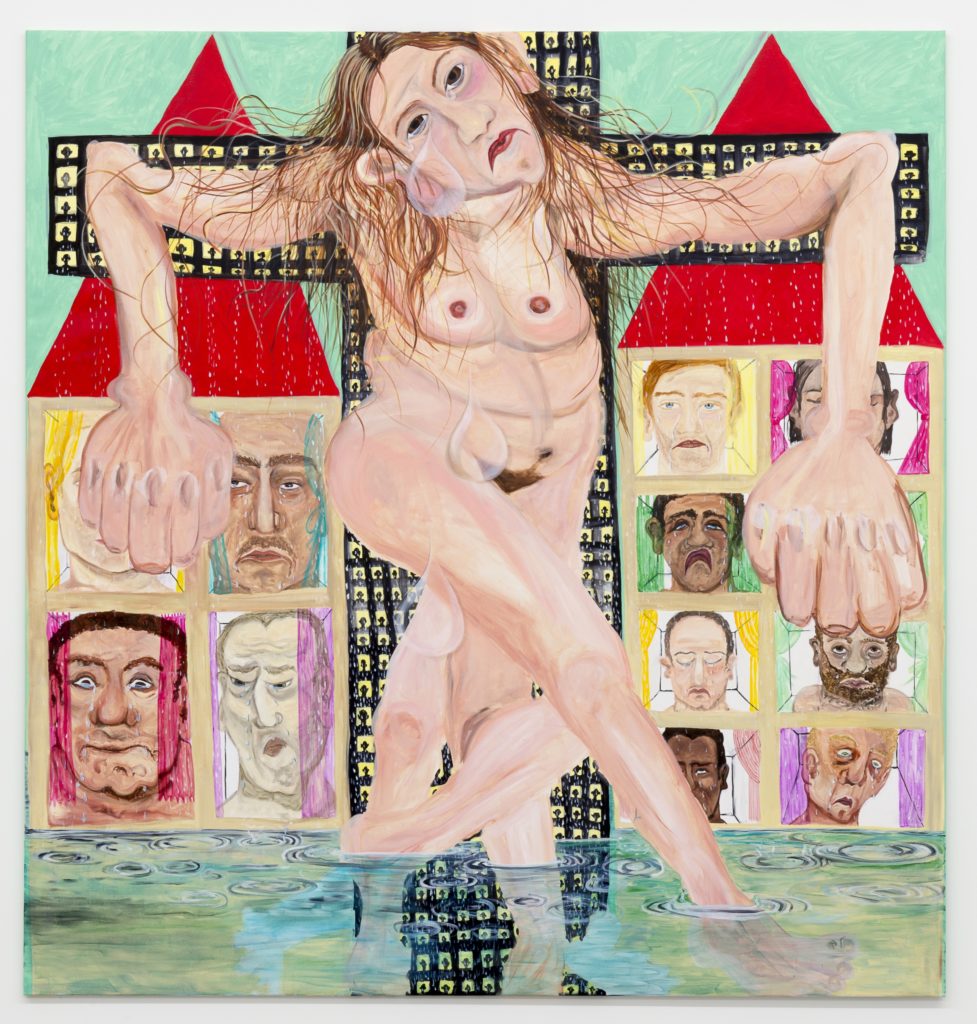
Jana Euler, Female Jesus crying in public, 2015 at Galerie Neu. Courtesy the artist and Galerie Neu, Berlin, Private Collection, Photo: Stefan Korte
In a statement, the director of Berlin Gallery Weekend, Maike Cruse, stressed that the organizing body does not get involved in galleries’ programs, and that dealers show whomever they want. This edition’s press release highlighted, somewhat clumsily, the “strong presence of young women artists,” calling it “a striking feature” this year.
But Cruse also admitted the numbers didn’t look good. “In the past, we’ve always had about 40 percent women artists. We’re at 30 percent for the first time this year.”
So why the gender bias among Berlin galleries? Marie-Blanche Carlier from Carlier Ι Gebauer thinks the question should be not only put to the male-dominated list for Gallery Weekend, but rather take a look at galleries’ artist roster that tend to be male-heavy. The disparity could be a result of financial realities. Male artists usually command higher prices and sell better.
“The fact is that the price of works by female artists are generally still lower than the price of works by male artists,” Carlier tells artnet News. The Berlin gallery is showing German artist Asta Gröting this year, who is known for her life-sized figurative sculptures. “This is of course only a reflection of the world economy and the patriarchic structures inherent in it, which is the way our society has been constructed for centuries. It is a vast question. and is slowly changing for the better with more transparency,” she says.
In a city that has been plagued by a rash of gallery closures, financial considerations are likely top of mind. Since last year, the list of participating exhibitors is down by two, from 47 to 45: one of the young galleries that took part for the first time in 2018, Gillmeier Rech, shut down just a couple of months after the springtime event.
The 16 galleries showing women artists belong, with a few exceptions, to the precarious mid-tier. But several of their artists are already established, including Alice Aycock (showing with Thomas Schulte), Camille Henrot (König Galerie), and Jana Euler (Galerie Neu).
Other artists showing this year are less well-known, but are making waves nonetheless. Raphaela Vogel (BQ Berlin) has a current exhibition at Munich’s Haus der Kunst, and had a solo show at Kunsthalle Basel during Art Basel last year. Henrike Naumann (KOW Gallery) made a strong impression at the 2018 Busan Biennale, where her installation was a highlight. And new media artist Signe Pierce (Eigen + Art Lab) will finally be getting her first solo show in Germany.
Below, we take a look at some other highlights from this year’s event.
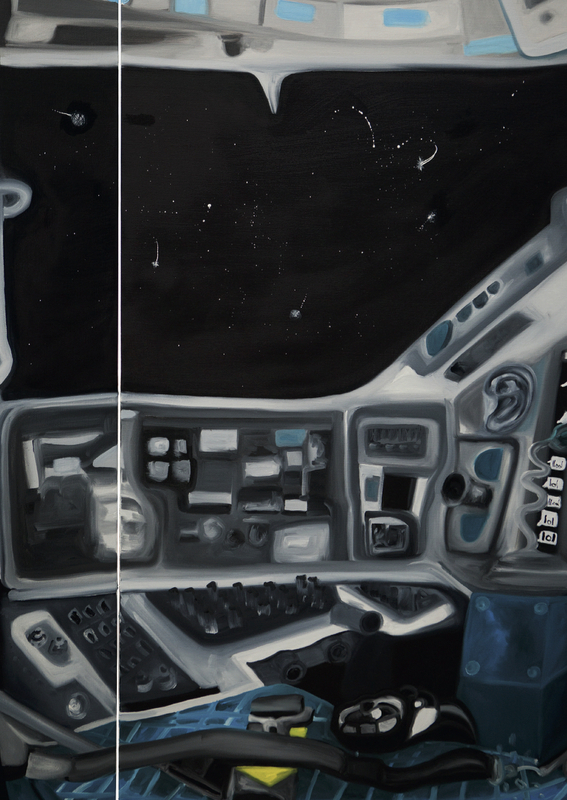
A work from Frieda Toranzo Jaeger’s exhibition, “Deep Adaptation.” Courtesy Galerie Barbara Weiss.
In the artist’s first show with the gallery, the Mexican-born, Berlin-based Frieda Toranzo Jaeger deconstructs the image of an automobile as a status symbol and a pillar of the German economy. Erasing the elements that imbue a car with a gendered code, she reinterprets the fetishization of car technology.

Elizabeth Jaeger, Fish (2018). Courtesy of the artist and Galerie Klemm’s.
The Brooklyn-based Elizabeth Jaeger is having her first show with a Berlin gallery, presenting a new series of blown-glass sculptures that resemble deep-sea creatures. Inspired by fish-shaped Roman vessels from the 2nd century BC that the artist found in major museums, the artworks are designed as so-called lachrimonies, flasks designed for the collection and storing of one’s tears.
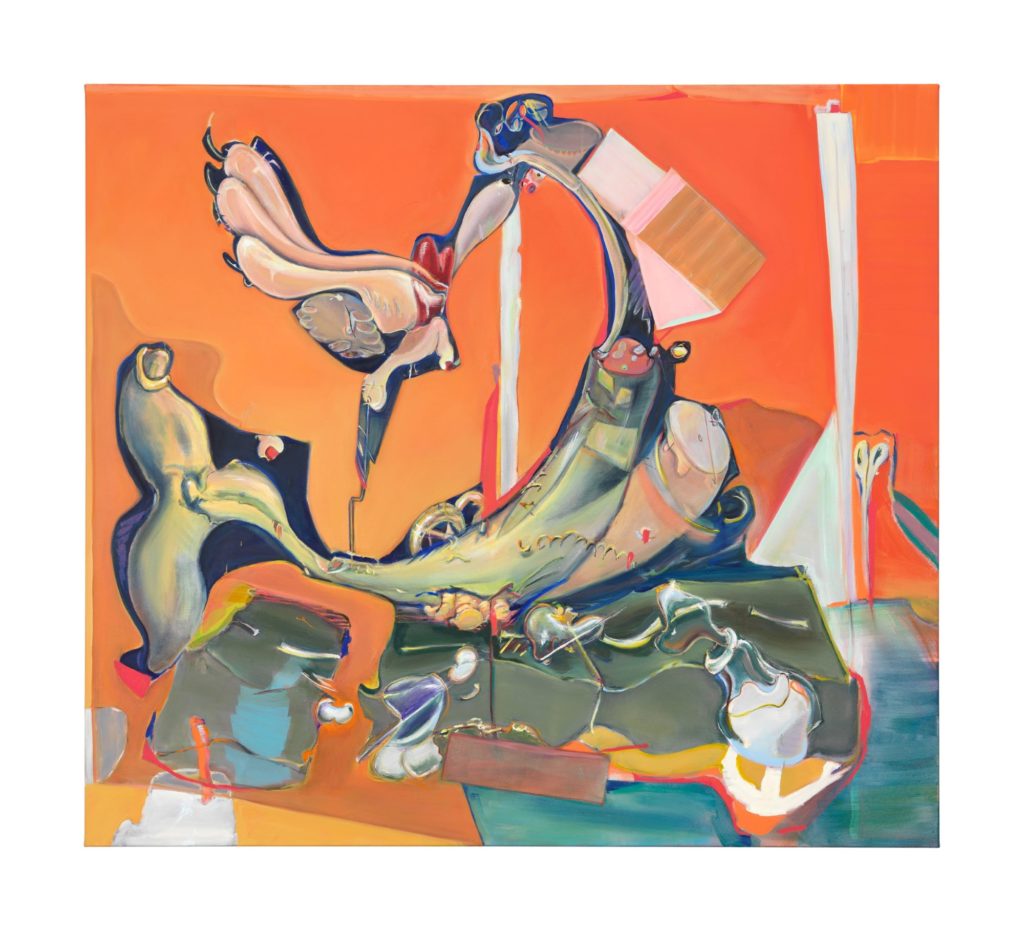
Stefanie Heinze, Median (Fin Fatale) (2018). © The artist, courtesy Capitain Petzel, Berlin. Photo: Lepkowski Studios.
The alluring, enigmatic paintings of the Berlin-based artist Stefanie Heinze often deal with failure or the inability to perform. Her large-scale canvases include corporal motifs that sometimes resemble intestines, bulging eyes, or flaccid penises. Her interest lies in mixing high and low, fantastical and obscene, and in presenting deeply psychological themes through the simple fact of bodily functions.
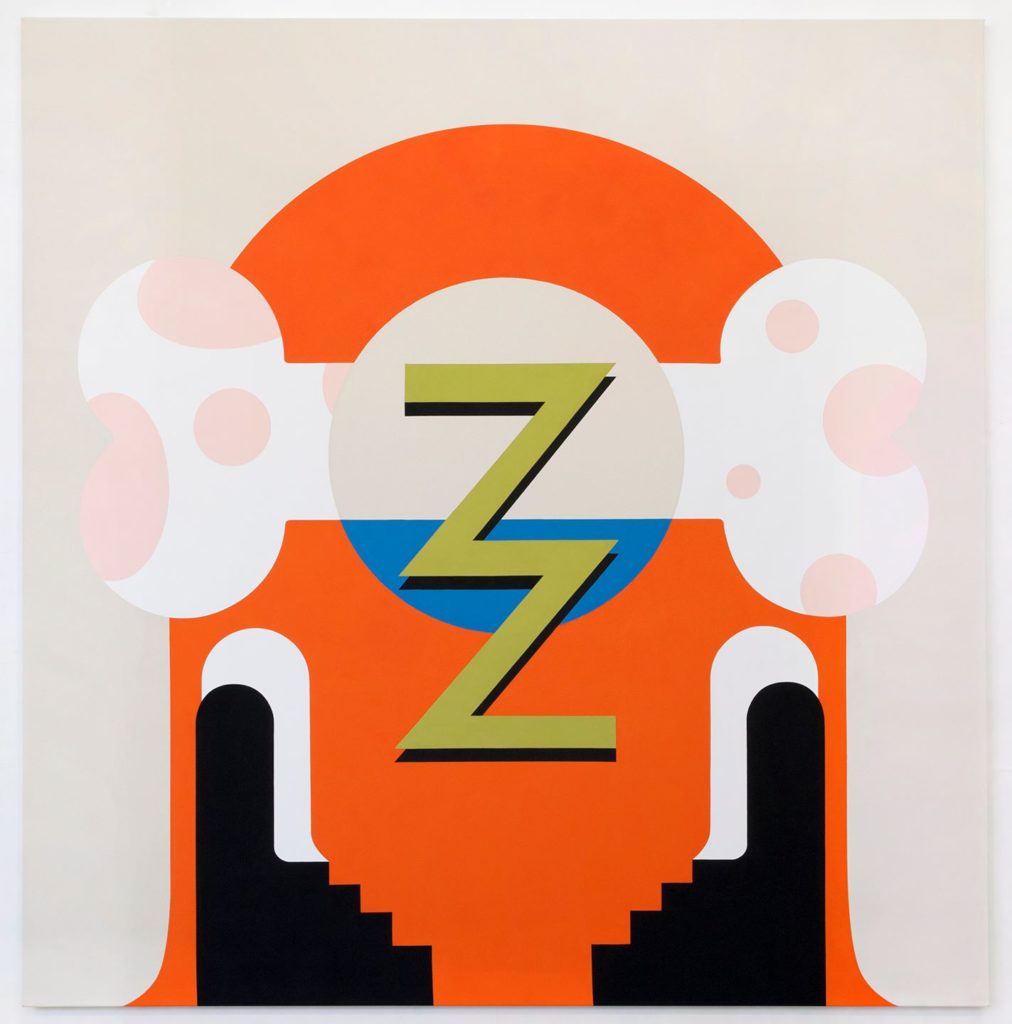
Math Bass, Newz! (2018). Courtesy of the artist and Tanya Leighton, Berlin.
Following Math Bass’s show at the Hammer Museum in Los Angeles, which closed this past March, Tanya Leighton is showing new works filled with the artist’s vocabulary of pictograms, symbols, and typography, set in new contexts to create a deceitfully straightforward visual language.
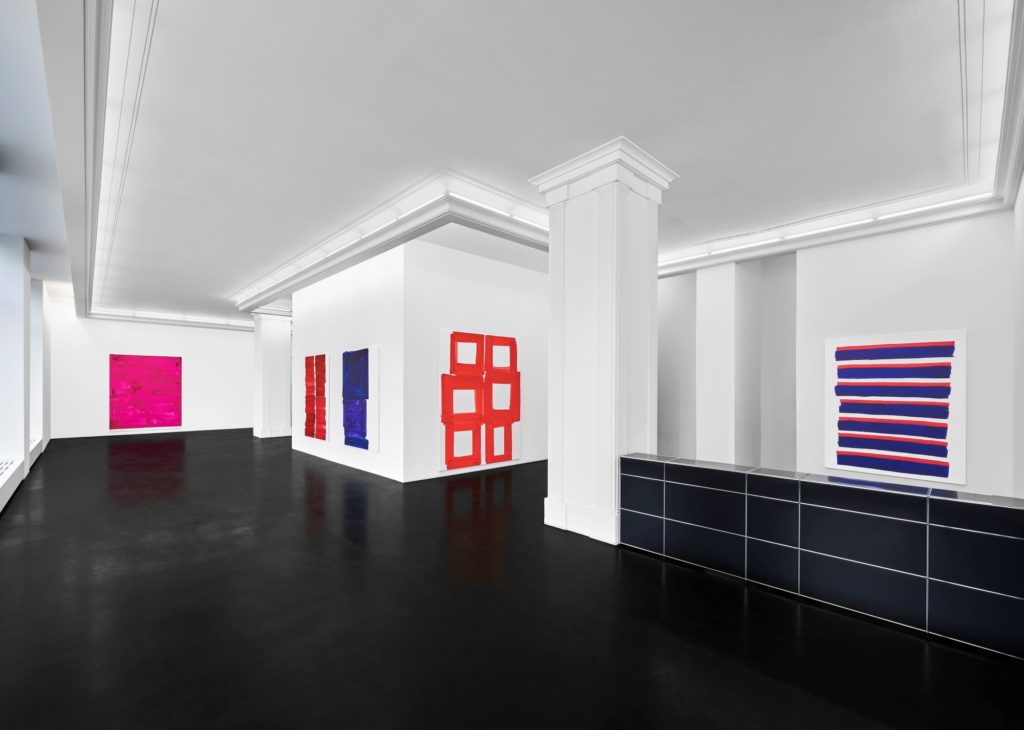
Beth Letain, “ultrapath” installation view, Peres Projects, Berlin.
Courtesy of the gallery. Photo by Matthias Kolb.
In her second show with the gallery, Beth Letain returns with her large-scale, Minimalist canvases that tempt to shake off the heavy burden of the Modernist canon. With easy lines and stacked shapes rendered in lively colors, Letain examines, through insistence and joy, how the self-seriousness of Modernism might be undone, brush stroke by brush stroke.
Berlin Gallery Weekend runs Friday, April 26–Sunday April 28 in various venues.